COLABA CAUSEWAY
Colaba Causeway is one of the commercial street and an up- market in the neighborhood of South Mumbai and is officially known as Shahid Bhagat Singh Road. Colaba Causeway serves as a bridge between Colaba and the Old Woman's Island in the city of Mumbai, India. Colaba Causeway is also very close to the popular places of Mumbai Bandra and Hanging gardens. Some of the famous landmarks of Mumbai like Gateway of India and Taj Mahal Palace are Tower are situated very close to Colaba Causeway.
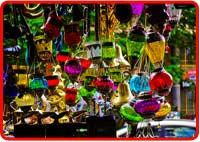 It is also situated close to other areas like the Fort and east of Cuffe Parade. Colaba apart from being one of the major shopping areas in Mumbai is also noted for its historical value and hence has a major tourist attraction. The history of Colaba dates back to the British East India Company. It was initially a part of the cluster of Islands that the Portuguese gifted to Charles II in his marriage. But it was soon taken over by the British East India Company in 1668. Once the Cotton exchange program was started this area was slowly converted into a trade center.
It is also situated close to other areas like the Fort and east of Cuffe Parade. Colaba apart from being one of the major shopping areas in Mumbai is also noted for its historical value and hence has a major tourist attraction. The history of Colaba dates back to the British East India Company. It was initially a part of the cluster of Islands that the Portuguese gifted to Charles II in his marriage. But it was soon taken over by the British East India Company in 1668. Once the Cotton exchange program was started this area was slowly converted into a trade center. Colaba Causeway a noted one- stop shopping up market is very famous for its shopping value. Apart from the shopping areas there are number of restaurants, cafes and eating joints. Transport to this place is very easy either through air, road or rail. Colaba Causeway is very close to the Chatrapati Shivaji Airport just at a distance of 28 kilometers and the nearest railway station to this place is the Church-gate railway station which is only 3 kilometers away. The Colaba Causeway being a major commercial street in Mumbai is always seen bustling with tourists and visitors who mainly come for shopping to this up market.
Anything is available at Colaba Causeway
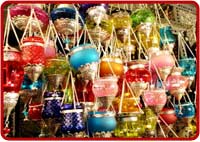 The genuine flavor of the city can be felt very much at Colaba Causeway. The Indian saying "sab kuch milega" in Hindi which means anything and everything is available at Colaba Causeway shopping market in Mumbai. There is nothing which is impossible in this market. As one meanders along the streets of this market we can witness from balloon to map sellers in the Colaba Causeway. Even if we wish to write our name in a grain of rice it is possible at Colaba Causeway. This up market remains open throughout the week from nine in the morning to ten in the night.
The genuine flavor of the city can be felt very much at Colaba Causeway. The Indian saying "sab kuch milega" in Hindi which means anything and everything is available at Colaba Causeway shopping market in Mumbai. There is nothing which is impossible in this market. As one meanders along the streets of this market we can witness from balloon to map sellers in the Colaba Causeway. Even if we wish to write our name in a grain of rice it is possible at Colaba Causeway. This up market remains open throughout the week from nine in the morning to ten in the night. Colaba Causeway has a very long history with the Fort area and part of older town were overcrowded in the nineteenth century, as the island of Colaba, the southern tip of the city, had already been declared a cantonment area in 1796, barring all construction by the civilian population. But however in the following decades the mode of transport for the people increased by boat which resulted in capsizing of overcrowded boats and many people died because of this which further led to an imperative construction of the causeway.
Colaba Causeway-history :
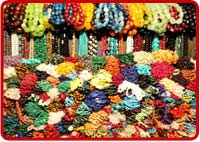
. During the period of 1861 to 1863 the Causeway was further widened. Slowly tram cars pulled by horses were introduced in Colaba Causeway.Today Colaba Causeway has become the culture square of Mumbai with its architecture being one of the reminiscent of Old Mumbai featured by number of reputed buildings like National Gallery of Modern Art (NGMA), Regal Cinema and Prince of Wales Museum which is now more popularly known as Chatrapati Shivaji Maharaj Museum. There is an exclusive residential area for the Parsis in the name of Cusrow Baug which houses nearly 500 Parsi families.
Destination for Artists
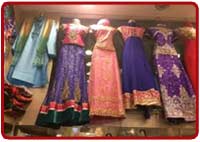 This place sprawls over an area of 84,000 square yards and was built in 1934.Colaba Causeway is also an ultimate destination for the artist community for there are lot of art galleries in this area. It can be even said that this is the hub for numerous art galleries. Colaba causeway has number of up market retail showrooms dealing with major brands in clothings and various other electronic items. There are also small shops in Colaba Causeway which deal with electronic gadgets, cosmetics, and music. There are small shops on the pavements selling tinklets' and book stalls which date back to several decades.
This place sprawls over an area of 84,000 square yards and was built in 1934.Colaba Causeway is also an ultimate destination for the artist community for there are lot of art galleries in this area. It can be even said that this is the hub for numerous art galleries. Colaba causeway has number of up market retail showrooms dealing with major brands in clothings and various other electronic items. There are also small shops in Colaba Causeway which deal with electronic gadgets, cosmetics, and music. There are small shops on the pavements selling tinklets' and book stalls which date back to several decades.
Colaba houses number of stores and small shops:
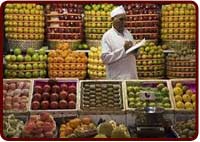 The big shops as well as the small shops in the footpath sells a wide display of items like artifacts, shawls, carpets, antiques and footwear. Colaba Causeway is always thronged by the natives of Mumbai and also the tourists from different parts of country and world for this is one of the most popular up market in Mumbai. There is no particular season for this market for it is crowded throughout the year. Apart from the up market shopping in Colaba Causeway it is also famous for its eating joints and cafes both among the locals of Mumbai and the tourists who visit this place.
The big shops as well as the small shops in the footpath sells a wide display of items like artifacts, shawls, carpets, antiques and footwear. Colaba Causeway is always thronged by the natives of Mumbai and also the tourists from different parts of country and world for this is one of the most popular up market in Mumbai. There is no particular season for this market for it is crowded throughout the year. Apart from the up market shopping in Colaba Causeway it is also famous for its eating joints and cafes both among the locals of Mumbai and the tourists who visit this place. Some of the most popular restaurant in Colaba Causeway is the Indian Mughlai fame Delhi Darbar restaurant, Piccadilly restaurant, Cafe Churchill, Mings Palace, Kailash Parbat and Gokul. There are two very famous cafes in Colaba Causeway which was founded in 1871 by the Iranians. These two cafes are still very famous in this area pulling lot of crowd and they are namely Cafe Mondegar and Cafe Leopold. These two cafes are the two most popular hangouts in Mumbai. There are lot of shops in Colaba Causeway selling handicrafts, books, jewelry, crystals, brass items, incense and clothes.
Colaba offer a varied range of items
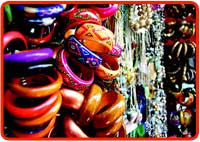 The ideal time to visit this place is in the evening. Lot of college students throng the shops at Colaba Causeway for there are number of shops which sell exclusive ethnic jewellery and colourful bangles and attractive items which mainly pulls the female especially the young girls. All kinds of electronic goods- both branded and the local items are also easily available in this market. Apart from these accessories stores and electronic shops, Colaba Causeway is also famous for wholesale vegetable and fruit market, poultry market and there are lots of pet stores too.
The ideal time to visit this place is in the evening. Lot of college students throng the shops at Colaba Causeway for there are number of shops which sell exclusive ethnic jewellery and colourful bangles and attractive items which mainly pulls the female especially the young girls. All kinds of electronic goods- both branded and the local items are also easily available in this market. Apart from these accessories stores and electronic shops, Colaba Causeway is also famous for wholesale vegetable and fruit market, poultry market and there are lots of pet stores too.
An ideal place for fun :
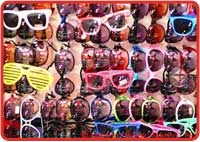 This is gala place to have fun at any part of the year. This up market has everything required for a common man where Colaba Causeway acts as quarantine say you throw the dice and you will either be a part of the Market Place or chucked out of it. The only thing we have to be cautioned about not only this particular market but almost all the shopping markets in Mumbai is the brands for most of the original brands are also duplicated here with not much of difference. So always be ready on the heels.
This is gala place to have fun at any part of the year. This up market has everything required for a common man where Colaba Causeway acts as quarantine say you throw the dice and you will either be a part of the Market Place or chucked out of it. The only thing we have to be cautioned about not only this particular market but almost all the shopping markets in Mumbai is the brands for most of the original brands are also duplicated here with not much of difference. So always be ready on the heels.. Nariman point is another major attraction near Colaba Causeway which is more of a business point with huge sky scrapers. Though this place does not attract the shoppers a lot but still it is a marvel to see number of buildings touching the sky. It is not advisable to make a visit to the Colaba Causeway during the months of June and July.
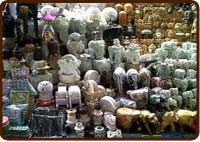
However now Prince of Wales Museum is renamed as Shivaji's Museum and holds a great attraction for the travelers and visitors. The most famous pilgrimage spot of the Muslims is the Haji Ali's Mosque which houses the tomb of Muslim Sufi Saint Haji Ali. This mosque at the spree of Colaba Causeway is situated near the Asia's longest Flyover. Some of the common scenes of the Colaba Causeway market are the long stone built walls with book stores, hotels, and people walking up and down across the streets with shopkeepers waiting for people to come in.
Colaba also houses many restaurants and eateries :
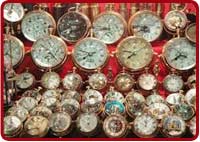 This is a hub for the college goers eating the chowpsey at road side and exchanging tea and cold drinks. This is some of the common site of the Colaba Causeway Market. This is an ideal market for daily wear clothes, silver and artificial jewellery, cosmetics and books. Visitors coming here should never miss to try a pair of delicate bellies and the rough trends of wooden shoes. Colaba causeway is the best place to have a leisure day. The Mumbai Thai hotel in Colaba Causeway is a very famous restaurant where we can enjoy a hearty meal or dinner.
This is a hub for the college goers eating the chowpsey at road side and exchanging tea and cold drinks. This is some of the common site of the Colaba Causeway Market. This is an ideal market for daily wear clothes, silver and artificial jewellery, cosmetics and books. Visitors coming here should never miss to try a pair of delicate bellies and the rough trends of wooden shoes. Colaba causeway is the best place to have a leisure day. The Mumbai Thai hotel in Colaba Causeway is a very famous restaurant where we can enjoy a hearty meal or dinner. 